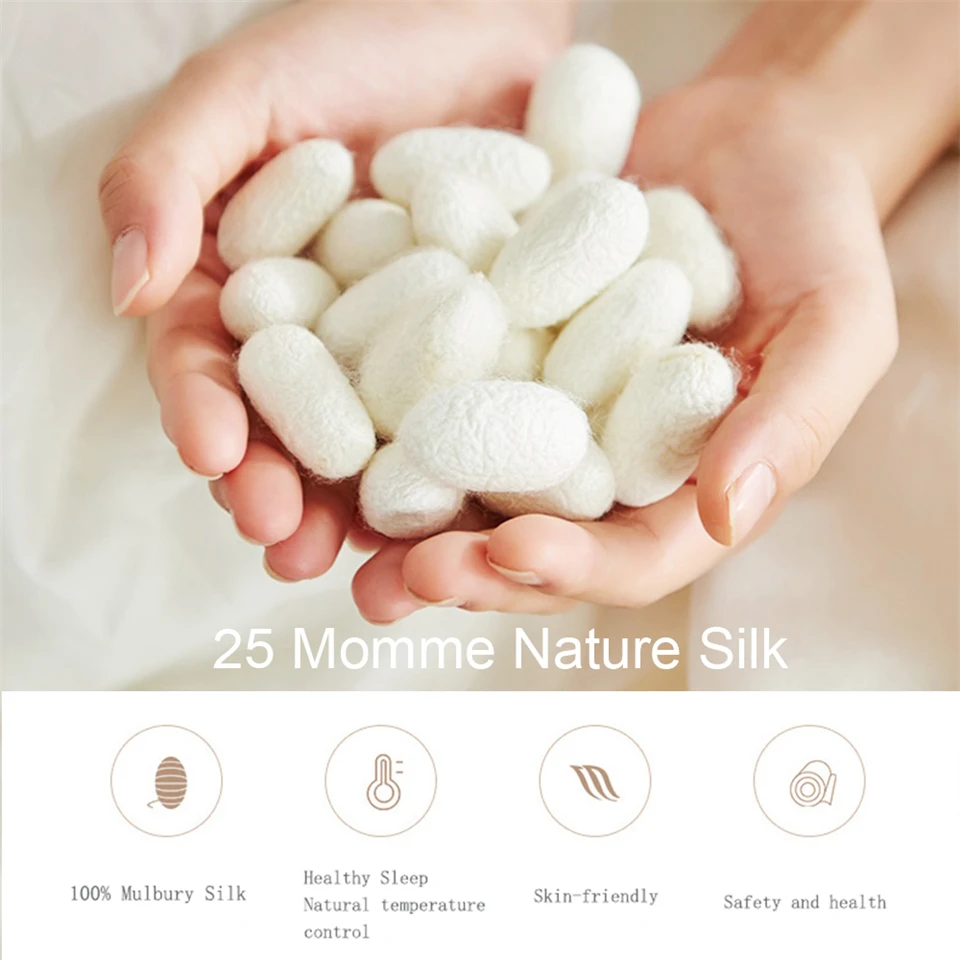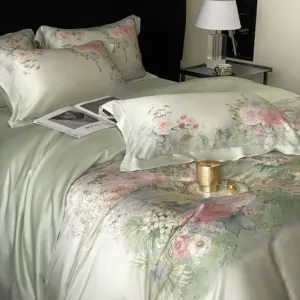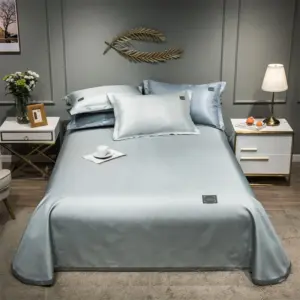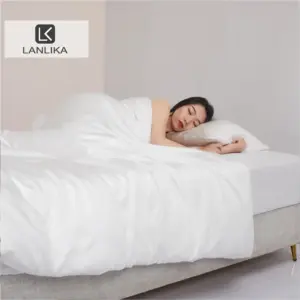Understanding Hypoallergenic Textiles
When we talk about hypoallergenic textiles, we’re referring to fabrics that are less likely to cause allergic reactions compared to conventional materials. These fabrics minimize the risk of skin irritation, respiratory issues, and other allergy symptoms that many people experience with regular textiles.
It’s important to understand that “hypoallergenic” doesn’t mean completely allergen-free. Rather, it indicates a significant reduction in potential allergens and irritants. Some materials are naturally hypoallergenic, while others undergo special treatments to reduce their allergenic properties.
Silk stands apart in the world of natural fibers due to its inherently hypoallergenic qualities. Unlike many synthetic alternatives, silk’s hypoallergenic properties stem from its natural composition rather than chemical treatments. The scientific evidence supporting silk’s hypoallergenic nature is substantial and rooted in its unique biological structure.
In recent years, the demand for hypoallergenic bedding has grown dramatically as more people recognize the connection between sleep environment and overall health. With approximately 20% of the population suffering from some form of textile sensitivity, the interest in hypoallergenic properties of silk fabric has increased significantly.
Among natural fibers, silk offers a unique combination of hypoallergenic properties that make it particularly valuable for those with sensitivities. Understanding how silk compares to natural hypoallergenic fabrics helps explain why it remains a premium choice for allergy sufferers.
The Unique Protein Structure of Silk
Silk’s remarkable hypoallergenic qualities stem directly from its distinctive protein composition. Unlike plant-based fibers like cotton, silk is made up primarily of two proteins: fibroin and sericin.
Fibroin makes up approximately 70-80% of silk’s composition and forms the structural core of silk fibers. This protein creates the smooth, strong filaments that give silk its characteristic feel and durability. The molecular structure of fibroin features tightly aligned amino acid chains that create an exceptionally smooth surface at a microscopic level.
Sericin, comprising the remaining 20-30%, acts as a protective coating around the fibroin core. This protein contains natural antimicrobial and anti-inflammatory compounds that help shield against common allergens. Sericin’s properties actively inhibit the growth of harmful microorganisms that can trigger allergic responses.
These proteins create a fiber unlike any other natural material. When examined microscopically, silk fibers appear smooth and uniform, without the rough edges and protrusions common in cotton or wool. This structural difference is fundamental to understanding what makes silk hypoallergenic and why it performs so differently than other bedding materials.
Research has shown that the amino acid composition of these silk proteins shares similarities with human skin proteins, contributing to silk’s exceptional biocompatibility. This natural affinity means silk causes minimal irritation even for those with sensitive skin or allergies.
The protein structure of silk doesn’t just make it smooth and strong—it creates the foundation for all the hypoallergenic benefits we’ll explore in the following sections, from dust mite resistance to moisture regulation.
How Silk Naturally Repels Dust Mites
Dust mites are among the most common household allergens and a primary trigger for allergic reactions in bedding. These microscopic creatures thrive in warm, humid environments where they feed on dead human skin cells—making conventional bedding an ideal breeding ground.
Silk’s natural ability to repel dust mites stems from several unique characteristics:
Tight fiber structure: Silk fibers create a dense, tightly woven surface that physically prevents dust mites from penetrating and colonizing the material. Unlike cotton’s looser weave, silk’s structure offers fewer spaces for mites to inhabit.
Smooth surface composition: The exceptionally smooth surface of silk fibers doesn’t trap dead skin cells effectively. With less food available, dust mite populations cannot establish themselves as readily as in other fabrics.
Low humidity microenvironment: Silk wicks moisture away from the surface, creating a drier environment that’s inhospitable to dust mites, which require humidity levels of 65-80% to thrive.
Natural protein barrier: The proteins in silk naturally deter dust mites, unlike plant-based fibers that offer no inherent resistance.
Research comparing dust mite populations in different bedding materials has consistently shown significantly lower concentrations in silk. One study found that silk bedding harbored up to 16 times fewer dust mites than cotton alternatives under identical conditions.
For those suffering from dust mite allergies, silk bedding for allergy sufferers can provide substantial relief from symptoms like sneezing, congestion, and skin irritation. The combination of physical barriers and natural repellent properties makes silk an excellent choice for creating a cleaner sleep environment.
Our 100% silk sheets provide the optimal barrier against dust mites while delivering the luxury sleep experience silk is renowned for.
Silk’s Defense Against Mold and Mildew
Mold and mildew growth in bedding materials represents another significant allergen source that can compromise sleep quality and health. These fungi thrive in damp environments where moisture accumulates—a common issue with many conventional bedding materials.
Silk offers exceptional defense against mold and mildew through its remarkable moisture management capabilities. While cotton can absorb up to 27% of its weight in moisture before feeling damp, silk can absorb an impressive 30% while still maintaining a dry feel against the skin.
The moisture-handling properties of silk work in several ways to prevent fungal growth:
- Silk fibers rapidly wick moisture away from the surface, preventing the prolonged dampness that fungi require
- The protein structure allows for quick evaporation and drying
- Moisture distributes evenly throughout the fabric rather than concentrating in spots
- Natural fungal-resistant properties in the silk proteins actively inhibit spore growth
These properties combine to maintain optimal humidity levels during sleep. By preventing the damp conditions that mold and mildew need to flourish, silk naturally creates an inhospitable environment for these common allergens.
Studies comparing fungal growth on various fabrics have shown that silk exhibits significantly less mold and mildew development compared to cotton, polyester, and other common bedding materials when exposed to identical conditions.
Our Mulberry silk sheets demonstrate these excellent moisture management properties while providing luxurious comfort. The high-quality fibers ensure optimal moisture control throughout the night, helping maintain a clean, allergen-reduced sleep environment.
Natural Antimicrobial Properties
One of silk’s most remarkable hypoallergenic qualities is its inherent antimicrobial nature. This property stems directly from the protein composition of silk fibers, particularly the presence of sericin.
Scientific research has identified several mechanisms behind silk’s antimicrobial effects:
- Sericin proteins contain compounds that inhibit bacterial growth
- The smooth fiber surface prevents bacterial attachment and colonization
- Silk’s moisture-wicking properties create an environment less conducive to bacterial proliferation
- Natural enzymes in silk fibers actively break down certain bacterial cell walls
These antimicrobial qualities persist even after multiple washes, unlike synthetic treatments that can diminish over time. Studies have shown that silk can reduce bacterial populations by up to 43% compared to cotton fabrics under identical conditions.
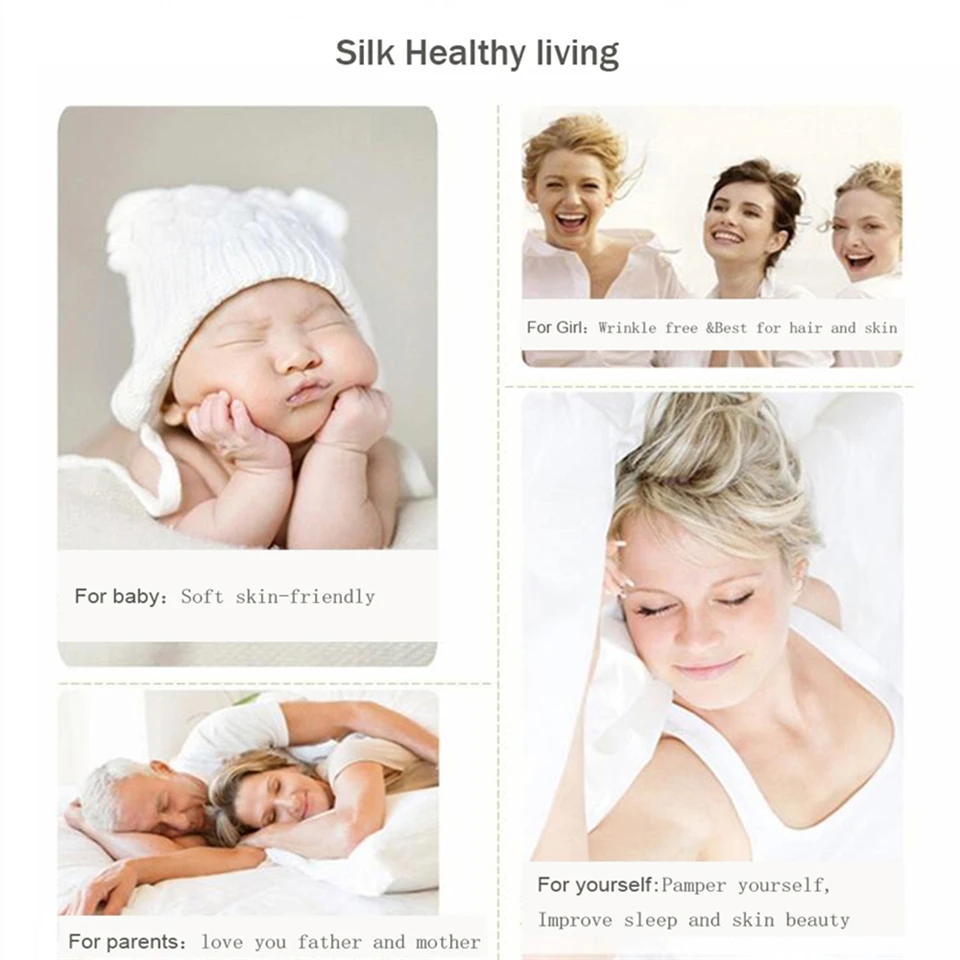
The reduction of bacteria on bedding surfaces directly translates to fewer potential irritants and allergens. Bacteria can produce waste products that trigger allergic responses, and some bacteria can exacerbate skin conditions. By naturally limiting bacterial growth, silk creates a cleaner sleep environment.
Additionally, the antimicrobial properties help prevent odor-causing bacteria from establishing themselves in bedding. This means silk bedding stays fresher longer between washes—another practical benefit stemming from its natural hypoallergenic qualities.
Understanding how silk sheets regulate temperature works in conjunction with these antimicrobial properties helps explain why silk creates such a comprehensive approach to allergen reduction and sleep health.
Silk and Sensitive Skin: Beyond Allergen Resistance
Beyond its ability to repel common allergens, silk offers exceptional benefits for sensitive skin that extend its hypoallergenic value. The unique physical and chemical properties of silk fibers create a gentle environment that helps protect and soothe troubled skin.
The ultra-smooth surface of silk fibers dramatically reduces friction against skin during sleep. Unlike cotton, which can catch and pull on skin, silk allows the skin to glide across its surface with minimal resistance. This reduced friction means:
- Less irritation for those with eczema, psoriasis, or rosacea
- Reduced aggravation of acne by preventing bacteria transfer
- Minimized sleep creases and wrinkles
- Prevention of hair breakage and tangling
The amino acid composition of silk bears remarkable similarities to human skin, with comparable protein structures that contribute to its exceptional compatibility. This molecular similarity helps explain why silk rarely triggers reactive responses even in highly sensitive individuals.
“Since switching to silk pillowcases, my eczema flare-ups have decreased significantly. The smooth surface doesn’t aggravate my skin like cotton did.” — Customer feedback
For those with specific skin conditions, the natural silk properties for sensitive skin provide noticeable relief. The combination of reduced friction, minimal irritants, and natural proteins creates an ideal environment for skin healing and regeneration during sleep.
The reduced friction also means less skin cell accumulation in bedding. This decrease in shed skin cells further supports silk’s hypoallergenic environment by eliminating a primary food source for dust mites.
Our Mulberry silk pillowcases provide direct benefits for facial skin, which tends to be particularly sensitive and prone to irritation from conventional fabrics.
Temperature and Moisture Regulation for Skin Health
Silk’s exceptional ability to regulate both temperature and moisture creates another dimension of its hypoallergenic benefits. These properties work together to maintain optimal sleeping conditions that protect skin health and minimize allergic triggers.
Unlike synthetic materials that can trap heat and moisture, silk naturally adapts to body temperature. This thermoregulation occurs through several mechanisms:
- Silk fibers contain nano-gaps that trap air for insulation when cold
- The protein structure allows excess heat to dissipate when warm
- Moisture absorption without surface dampness maintains comfort
- Rapid evaporation properties help cool skin when needed
This temperature balance helps prevent night sweats and excessive moisture that can trigger skin irritation. For those with temperature-sensitive skin conditions like eczema or rosacea, maintaining a stable microclimate during sleep is crucial for preventing flare-ups.
Temperature Regulation Information
Silk can help maintain skin temperature within the optimal range of 91-96°F (33-35.6°C) throughout the night, while synthetic fabrics often cause temperature fluctuations outside this range.
Studies show that proper temperature regulation during sleep directly influences skin barrier function and recovery. Overheating can increase inflammatory responses and exacerbate existing skin conditions. Silk’s ability to prevent these temperature fluctuations helps prevent night sweats and their associated skin irritation.
The moisture management capabilities of silk also prevent the dampness that can lead to fungal infections and bacterial growth. By wicking moisture away while maintaining appropriate hydration levels, silk creates an environment that supports skin healing and protection.
Chemical-Free Nature of Pure Silk
An often overlooked aspect of silk’s hypoallergenic properties is its naturally chemical-free composition. While many modern fabrics undergo extensive chemical processing, high-quality silk requires minimal chemical intervention, making it ideal for those with chemical sensitivities.
| Fabric Type | Typical Chemical Treatments | Residual Irritants | Hypoallergenic Rating |
|---|---|---|---|
| Pure Silk | Minimal processing, natural dyes | Very low | Excellent |
| Conventional Cotton | Pesticides, formaldehyde, dyes | Moderate to high | Poor to moderate |
| Synthetic Fabrics | Petrochemicals, flame retardants, finishers | High | Poor |
The production of high-quality Mulberry silk focuses on preserving the natural properties of the fiber. Unlike conventional cotton, which may contain residual pesticides, or synthetic fabrics made from petroleum-based chemicals, silk starts as a natural protein fiber that requires little modification to become bedding.
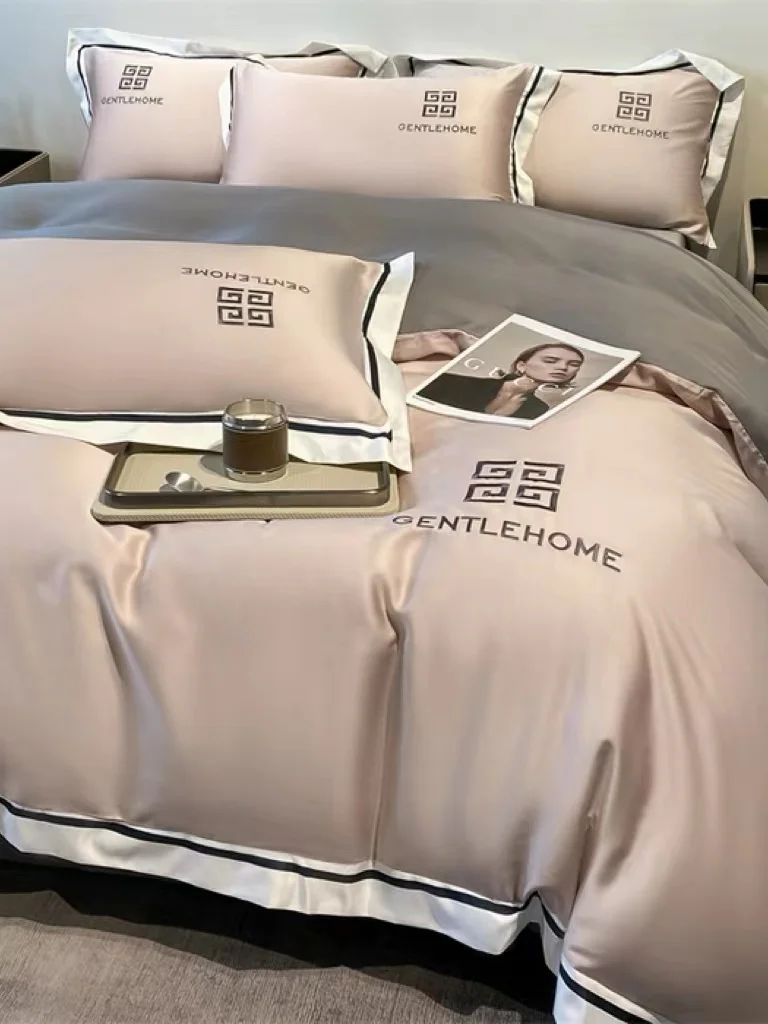
Certifications like OEKO-TEX Standard 100 provide assurance that silk products have been tested for harmful substances and meet strict safety standards. This verification is particularly important for those with chemical sensitivities or multiple allergies.
The absence of chemical residues in high-quality silk means:
- No formaldehyde (common in wrinkle-resistant treatments)
- No flame retardants that can cause skin irritation
- No optical brighteners that can trigger photosensitivity
- No antimicrobial chemical treatments with potential side effects
When comparing the most hypoallergenic fabric options available, silk consistently ranks at the top due in large part to this chemical-free nature. The combination of natural protein structure and minimal processing creates a truly clean sleep surface.
Our silk pillowcases maintain this commitment to purity, offering a chemical-free option for the fabric that makes the most direct contact with your face throughout the night.
Momme Weight and Hypoallergenic Properties
The momme weight of silk—a measurement of density and quality—plays a crucial role in determining its hypoallergenic effectiveness. This measurement, expressed as a number followed by “mm,” indicates the weight in pounds of a piece of silk measuring 45 inches by 100 yards.
Higher momme weights, particularly in the 19-25 range, provide enhanced hypoallergenic benefits through several mechanisms:
- Greater fiber density creates a more effective barrier against allergens
- Tighter weave prevents penetration by dust mites and other microscopic irritants
- Increased durability ensures hypoallergenic properties remain effective over time
- Superior moisture management through optimal thread structure
The relationship between momme weight and hypoallergenic protection follows a clear pattern. While lower momme silks (11-16) offer basic benefits, the premium range (19-25) provides significantly enhanced protection:
| Momme Weight | Dust Mite Resistance | Durability | Moisture Control | Overall Hypoallergenic Rating |
|---|---|---|---|---|
| 11-16 mm | Moderate | Low-Moderate | Basic | Good |
| 17-19 mm | Good | Good | Good | Very Good |
| 19-25 mm | Excellent | Excellent | Excellent | Excellent |
| 25+ mm | Superior | Superior | Superior | Superior but less breathable |
When selecting silk bedding for maximum hypoallergenic benefits, the optimal range generally falls between 19-25 momme. This range balances luxurious feel with practical protective properties without sacrificing breathability or comfort.
Our luxury silk bedding sets feature carefully selected momme weights to provide optimal hypoallergenic protection while maintaining the sumptuous feel that makes silk so desirable.
Caring for Silk to Maintain Its Hypoallergenic Properties
Proper maintenance is essential to preserve silk’s natural hypoallergenic qualities. With appropriate care, silk bedding can maintain its allergen-resistant properties for many years, making it a worthwhile investment for allergy sufferers.
To preserve the protein structures that give silk its hypoallergenic properties:
- Wash silk using pH-neutral detergents specifically formulated for delicates
- Avoid harsh chemicals, bleach, and enzyme-containing detergents that can damage proteins
- Use cold or lukewarm water (never hot) to prevent protein denaturation
- Hand wash or use a washing machine’s delicate cycle in a mesh laundry bag
- Rinse thoroughly to remove all soap residue that could irritate skin
Drying methods significantly impact silk’s hypoallergenic performance:
- Air dry away from direct sunlight to prevent fiber damage
- Hang or lay flat on a clean towel
- Never use a tumble dryer as heat damages protein structure
- Ensure silk is completely dry before storing to prevent mildew
Regular maintenance enhances hypoallergenic properties:
- Air silk bedding weekly to release trapped allergens
- Avoid fabric softeners that leave residues attractive to dust mites
- Consider gentle steaming occasionally to sanitize without chemicals
- Store in breathable cotton bags, never plastic which can trap moisture
With proper care, silk’s natural resistance to dust mites, bacteria, and fungi can remain effective for years. This longevity makes silk bedding not only a luxury choice but also a practical investment in long-term health and comfort.
100% Silk Sheets, Green Silk Sheets, King Size Silk Bedding Set, Mulberry Silk Bedding Sets, Queen Size Silk Bedding Set
Price range: $1,246.21 through $1,615.22 Select options This product has multiple variants. The options may be chosen on the product pageEucalyptus Silk Bedding Sets, Eucalyptus Silk Sheets
Price range: $360.24 through $393.60 Select options This product has multiple variants. The options may be chosen on the product page- Price range: $267.82 through $306.55 Select options This product has multiple variants. The options may be chosen on the product page
Bamboo Silk Sheets, Cooling Silk Sheets
Price range: $130.76 through $177.80 Select options This product has multiple variants. The options may be chosen on the product page100% Silk Sheets, King Size Silk Bedding Set, Mulberry Silk Bedding Sets, Queen Size Silk Bedding Set, White Silk Sheets
Price range: $1,000.79 through $1,351.42 Select options This product has multiple variants. The options may be chosen on the product pageBamboo Silk Sheets, Queen Size Silk Fitted Sheet
Price range: $230.24 through $297.88 Select options This product has multiple variants. The options may be chosen on the product page
Addressing Silk Allergies: The Rare Exception
While silk is hypoallergenic for the vast majority of people, it’s important to acknowledge that true silk allergies do exist, though they are quite rare. These allergies typically involve an immune response to the proteins in silk fibers.
It’s essential to distinguish between genuine silk allergies and reactions to other elements:
- True silk allergies cause consistent reactions upon contact with pure silk
- Many “silk allergies” are actually reactions to dyes, treatments, or contaminants
- Some people react to sericin specifically but tolerate degummed silk well
- Skin irritation might be from friction rather than allergic reaction
Signs that may indicate a true silk allergy include:
- Skin redness, itching, or hives that appear after contact with silk
- Respiratory symptoms like sneezing or congestion when around silk items
- Symptoms that consistently occur with different silk products
- Reactions that persist with undyed, untreated silk
For those with confirmed silk allergies, alternatives are available. Our vegan silk bedding provides many of the benefits of traditional silk without the animal proteins that trigger reactions.
If you suspect a sensitivity to silk, test a small sample against your skin before investing in silk bedding. Place a silk swatch against the inside of your wrist or behind your ear for 24 hours to check for any reaction.
Why Silk Creates a Healthier Sleep Environment
The combination of silk’s multiple hypoallergenic properties creates a comprehensive approach to allergen reduction that few other materials can match. This synergy translates directly into a healthier sleep environment with wide-ranging benefits.
Silk’s hypoallergenic advantages work together to create multiple lines of defense:
- Physical barriers prevent dust mite colonization through tight fiber structure
- Antimicrobial properties reduce bacterial and fungal populations
- Moisture control prevents the damp conditions allergens need to thrive
- Chemical-free nature eliminates irritant exposure during sleep
- Smooth surface reduces skin irritation and cell accumulation
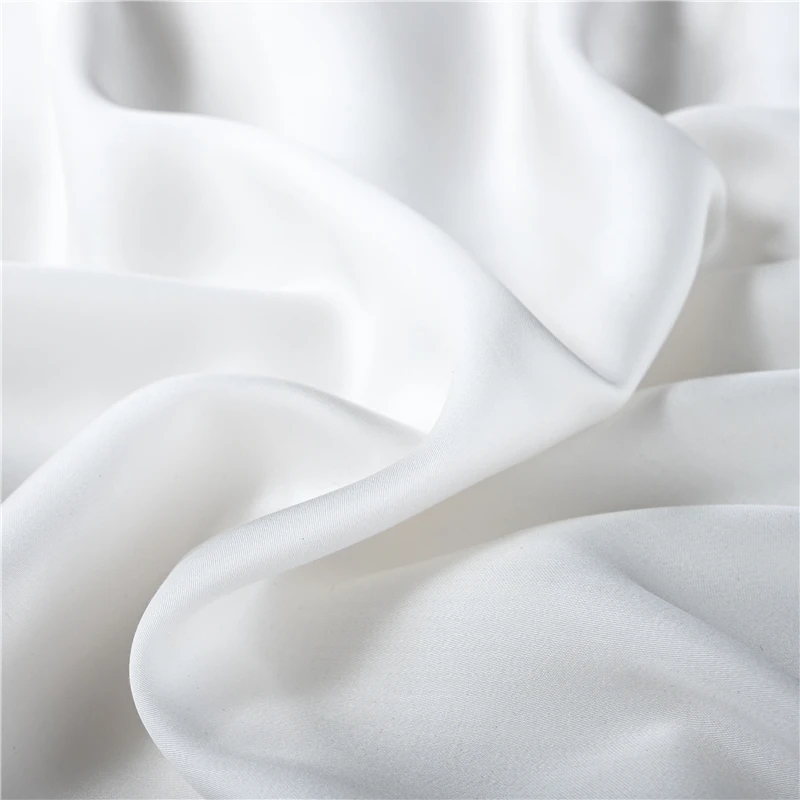
The connection between a hypoallergenic sleep environment and overall health is well-established. Research shows that reducing nighttime allergen exposure can:
- Improve sleep quality by reducing night-time allergic symptoms
- Decrease morning congestion and respiratory issues
- Reduce skin flare-ups of conditions like eczema and psoriasis
- Lower systemic inflammation markers related to allergic responses
- Enhance recovery and immune function through improved sleep quality
The long-term benefits extend beyond immediate symptom relief. By consistently reducing allergen exposure night after night, silk bedding helps break the cycle of chronic inflammation that can worsen existing allergies and sensitivities over time.
At Sanctuary Soft, we understand that investing in hypoallergenic features of silk sheets represents more than a luxury purchase—it’s an investment in nightly wellness. The natural protection silk provides creates a true sanctuary for restorative sleep, particularly valuable for those with allergies, sensitivities, or skin conditions.
By choosing silk bedding, you’re selecting a natural solution to allergen exposure that has stood the test of time. The same properties that have made silk prized for thousands of years continue to provide exceptional hypoallergenic benefits in today’s world of increasing sensitivities and allergies.

